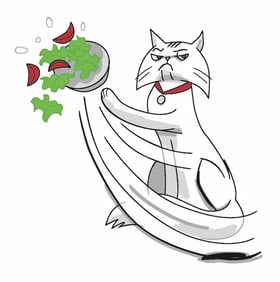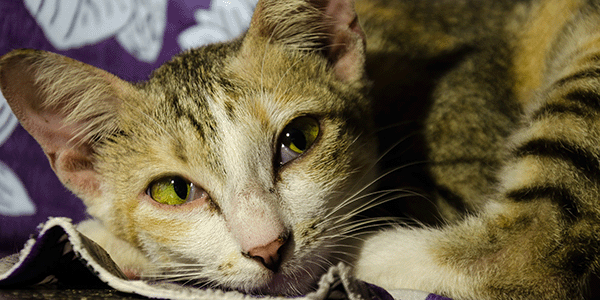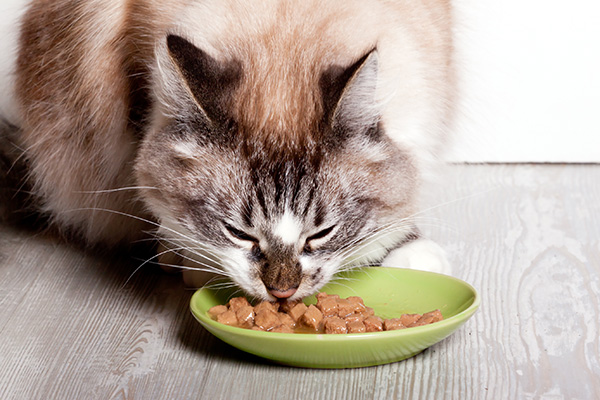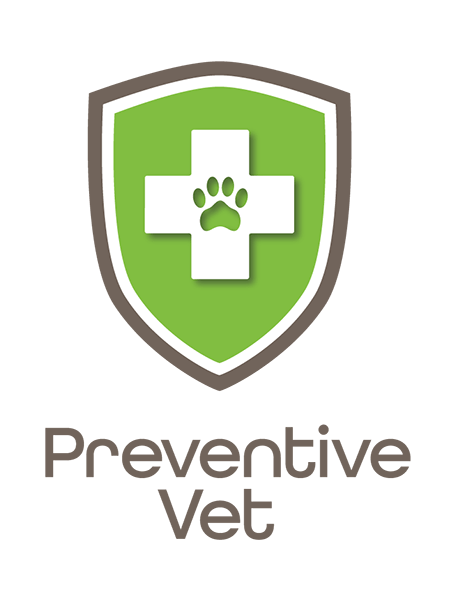- en
If your cat isn't eating or drinking, this is a very concerning situation, and the reason must be determined. The cause may be simple or serious, but either way, a solution must be found.
This information will help you know what to do, how to make your cat more comfortable, and how to get them to eat and drink again.
Quick Links

People, and even dogs, can get along just fine on a vegetarian diet. Your cat... not so much. That's because cats are obligate carnivores – meaning that they have a biological need for animal protein (meat). They can't survive, let alone thrive, without it. Not only is your kitty's digestive system designed to break down and absorb animal proteins better than plant-based ones, but those animal proteins contain all the essential amino acids your cat needs to keep their heart, vision, and immune system functioning properly. So, please don't try to make your cat a vegetarian or vegan. It won't go well.
Our mission is to help save dogs' and cats’ lives through our educational content. To support our efforts, this page may contain affiliate links. We earn a commission for qualifying purchases – at no cost to you.
A cat should consume 3.5–4.5 ounces of water per 5 pounds of body weight, so a 10-pound cat should drink 7–9 ounces (approximately a cup) of water daily. Water bowls should be cleaned and refilled to the same place each day. This will help you gauge how much your cat drinks and make it easier to notice a change.
Water can be consumed through canned food too. A can of wet food is about 70–80% water. So if your cat is eating wet food, which is highly recommended, they might get between 3.85–4.4 ounces of water from a single can (an average 5.5 ounce can). That’s half their daily water right there.
Cats cannot go without water for more than three days. Dehydration can create its own series of negative issues for your cat. If you notice that it has been more than 24 hours since your cat drank, it is important to contact your veterinarian.
An average cat should eat a minimum of 1/2 cup of food each day. Some cats may need more, but your veterinarian will be able to instruct you depending on your cat's health and body weight.
While a cat can feasibly go without food for a week if they have water, this isn’t a good situation. The lack of protein can make them even weaker than the possible cause of the lack of appetite. This situation is even more dangerous for obese cats because they risk developing hepatic lipidosis.

The cause of your cat refusing to eat or drink can be as simple as they don’t like their bowl or the location of the bowl. Another issue, if there are other cats in the household, is bullying may be occurring when the cat attempts to eat. And then some cats just are really picky eaters and refuse certain foods after a certain period of time.
More serious issues that can cause and lead to a lack of appetite or drinking are intestinal issues, diabetes, kidney disease, problems with their teeth or gums, etc.
Whether the cause is simple or serious, any time your cat has stopped eating or drinking for more than a day, contact your veterinarian. The sooner the problem is diagnosed, the better you and your cat will feel.
If your cat is consuming less, this may cause dehydration and may indicate sickness.
Signs of dehydration include:
If your cat isn’t eating enough, your cat may:
You should call your veterinarian ASAP. In the meantime, there are a few things you can try at home.
Remember, canned food counts as a source of water consumption!
Read our article for tips and more information on dehydration.
Steps 1 through 3 above may help entice your cat to eat, in addition to consuming more water. If not, try some of these additional tips.
Changing where you feed your cat may make a difference. This is especially true if there are other cats in your home or the feeding bowl is near a litter box. In addition to this, you may need to change the type of bowl that you place the food in. Some cats have particular preferences. You may need to experiment with glass, ceramic, or stainless steel bowls. There are even some cats that prefer plates.
Read our article for more information and tips on how to get your cat to eat.
If your cat is eating 1/3 to 1/2 cup of food and consuming 7–9 ounces of water, your cat is back on track!

If your cat has already been to the veterinarian, and you've been trying additives in their food, and there is no improvement within 36 hours, it’s time to call your veterinarian again. Your vet will perform some additional diagnostic tests to pinpoint the cause of your cat’s change in food and water consumption.
Your veterinarian may also ask you questions about any changes that have occurred in your cat’s environment. This can include new pets or people, new furniture, construction, sounds, etc.
If a medical cause, such as infection, pain, or disease, cannot be found, your veterinarian may recommend a consultation with a veterinary behaviorist.

Always offer fresh water and food. To keep your cat’s dry food fresher, divide it into weekly servings upon opening the bag. Next, place the weekly servings in a Ziploc® bag and place them into the freezer. Then only take out a bag at a time. Some cats prefer food that is super fresh. It never hurts to add canned food to increase water consumption. And don’t forget, there are plenty of additives to entice your cat to eat and drink!
Be aware of any environmental changes that may impact your cat’s desire to eat or drink. What may not be a big deal to us may be significant to your cat.
The Pet InfoRx® is made possible, in part, through our partnership with AlignCare®.


© Preventive Vet. All rights reserved. PreventiveVet.com
